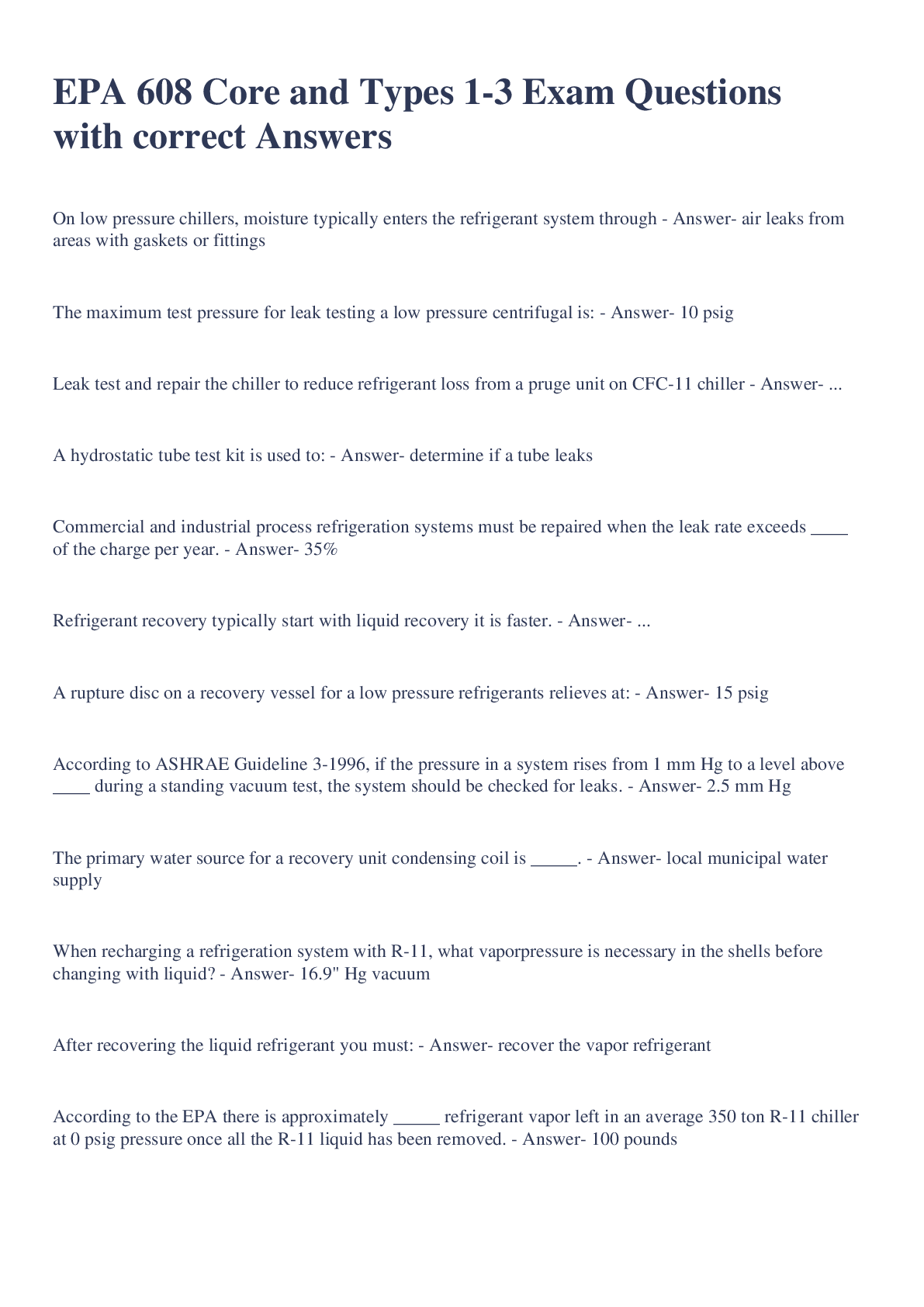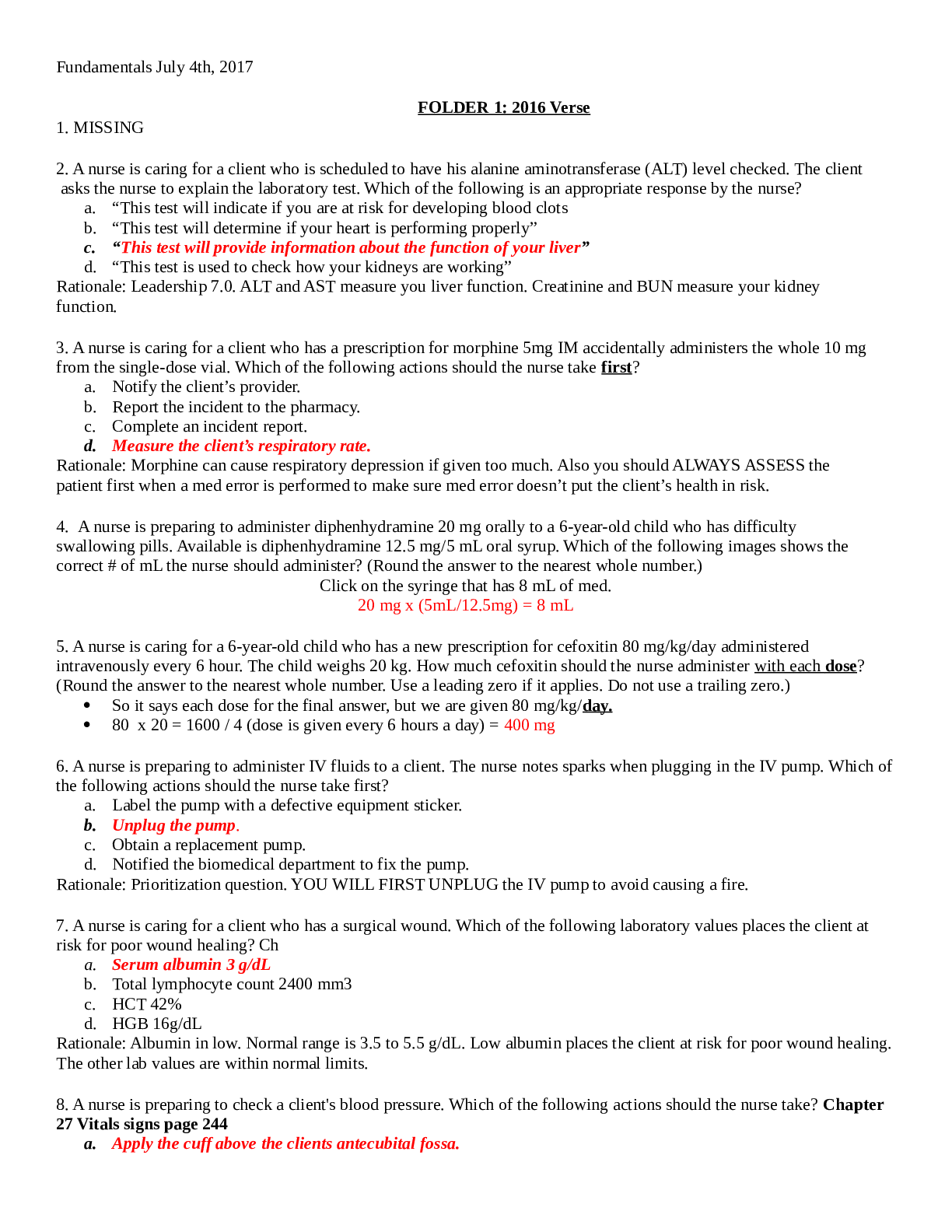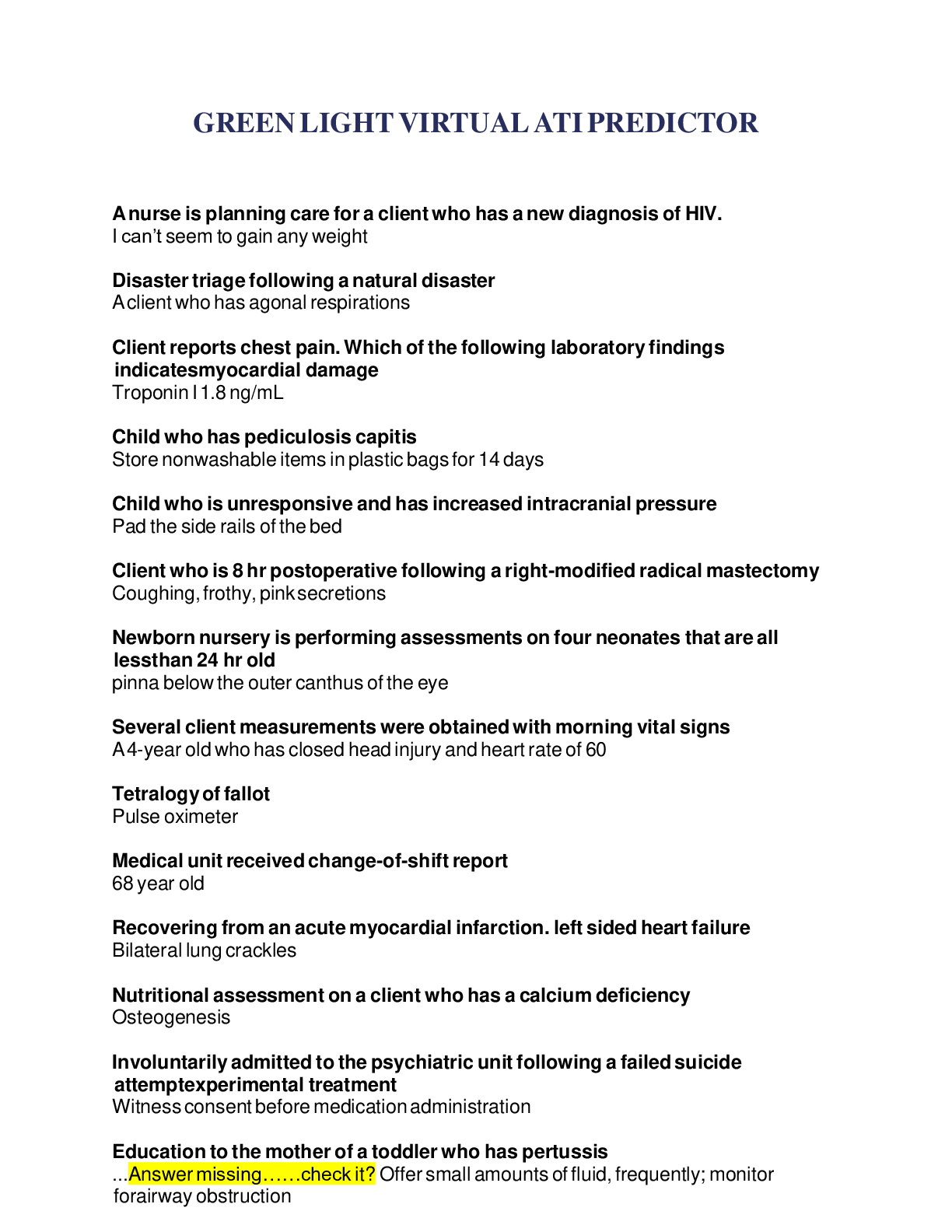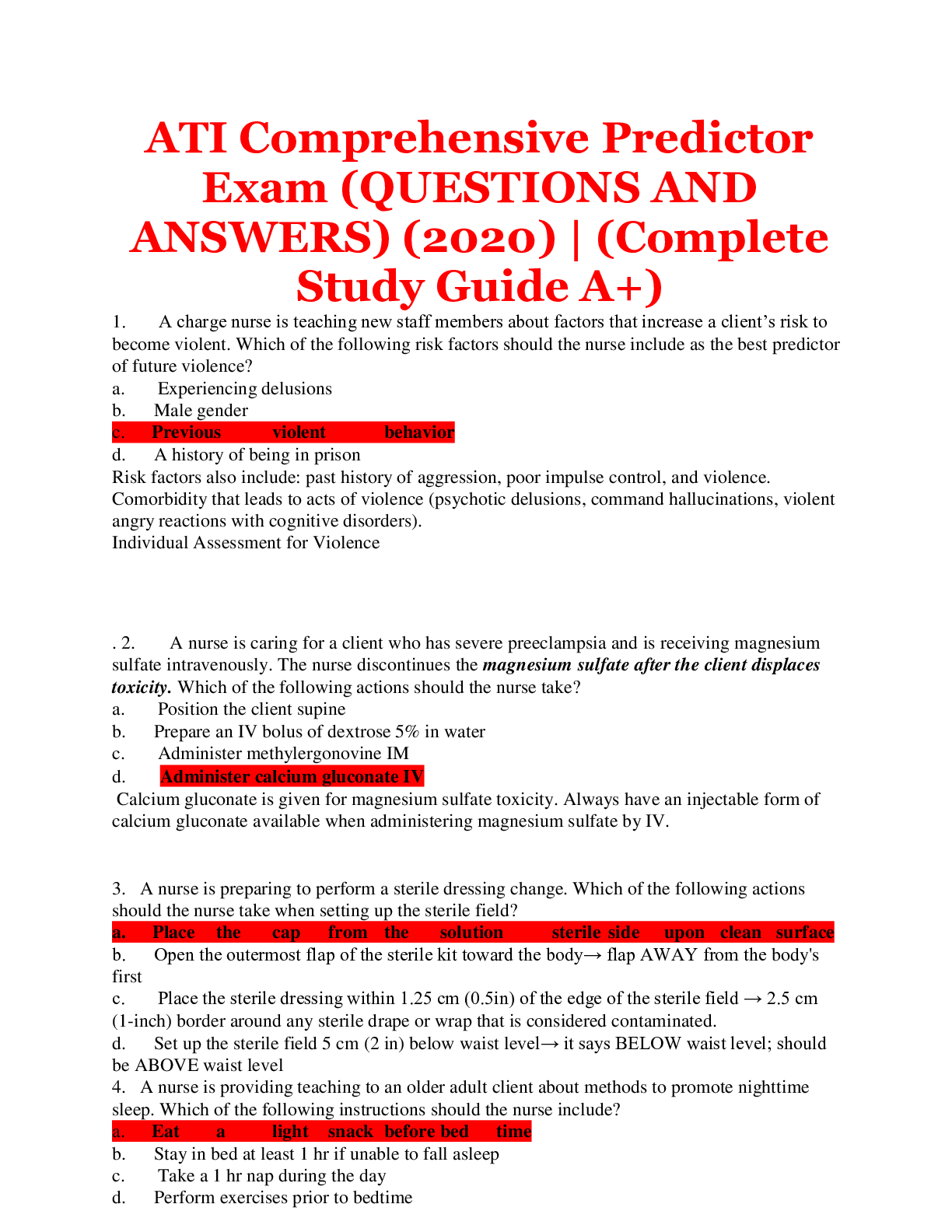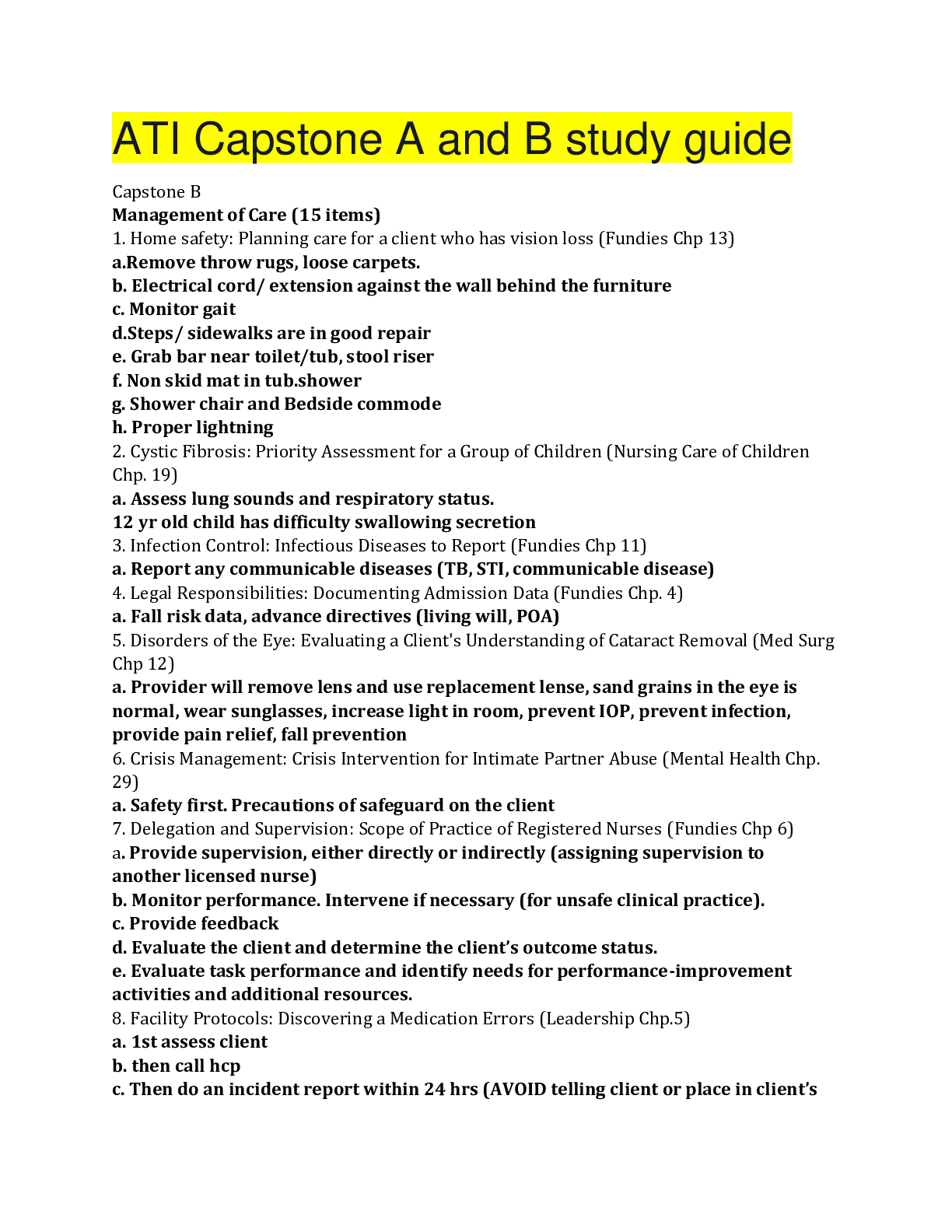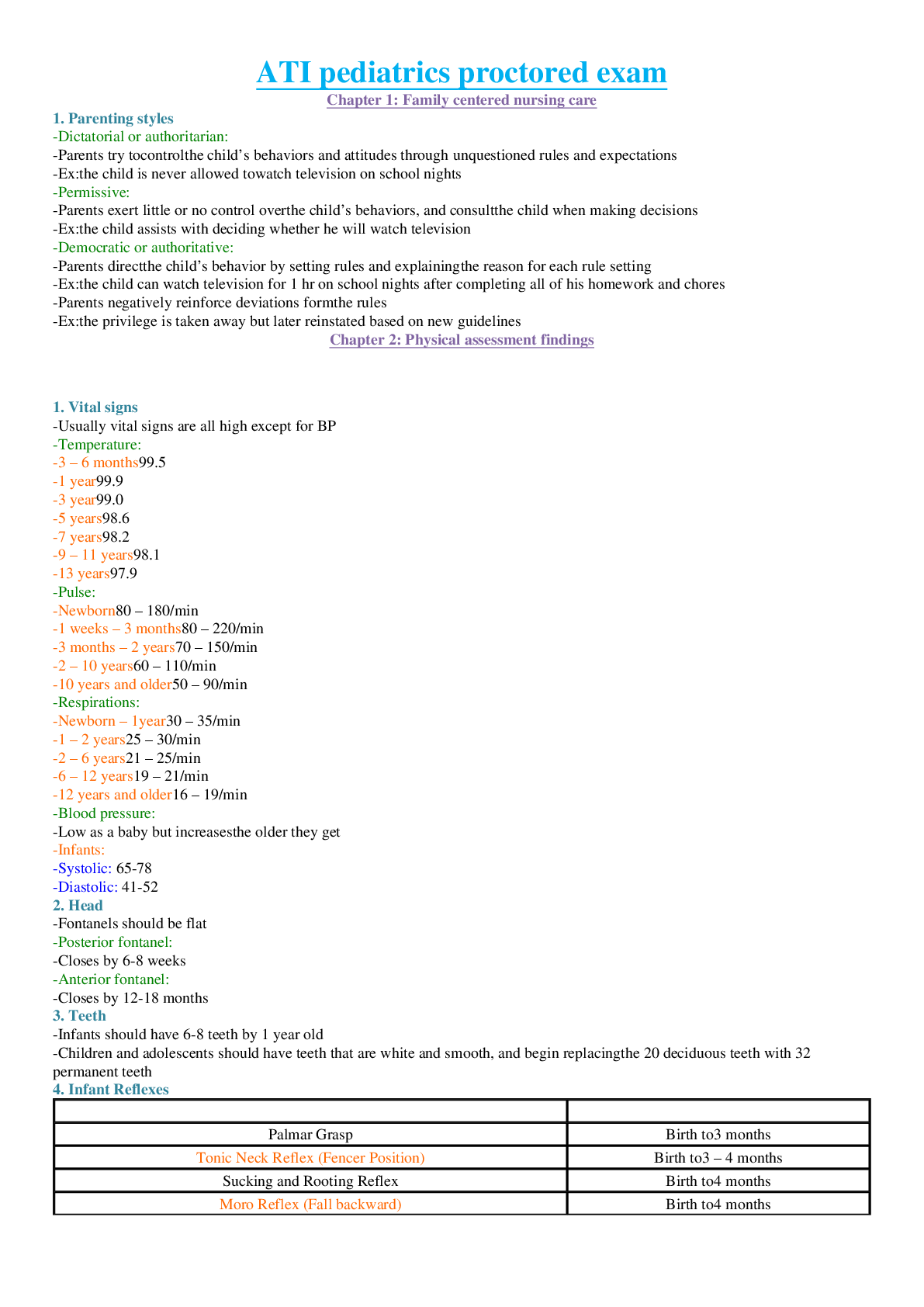Health Care > QUESTIONS and ANSWERS > EMT BASIC 101 Altered |Mental| Status| Scenarios (All)
EMT BASIC 101 Altered |Mental| Status| Scenarios
Document Content and Description Below
1. Dispatched at 10:00 pm to the homeless shelter for a 54-year-old male who is behaving strangely. General impression Patient is agitated, pacing back and forth. Speech is somewhat slurred. Smell o... f alcohol. Mental Status Alert and disoriented, not answering questions appropriately, doesn’t know what is happening Airway Open Breathing Normal respirations Lung sounds clear/= bilaterally Circulation Rapid, irregular pulse Skin is pale, cool, diaphoretic Vitals BP 152/96 HR 120 RR 20 Pulse ox 98% Pupils dilated, equal and reactive Assessment SAMPLE S: Altered mental status, sudden onset – approx 30 minutes ago; denies any pain; BG 50 mg/dl A: none M: insulin P: Diabetic, substance abuse L: breakfast E: came in from outside and began acting strange Bystanders don’t know his medical history. States he was seen earlier with another resident who was later found taking drugs. Treatment Oxygen by NC at 2L; 15g oral glucose Impression Hypoglycemia Differentials: drugs, alcohol overdose, trauma, stroke Critical Thinking: What would a normal blood glucose range be? 80-120 What could be a possible cause of this patient’s hypoglycemia? Last oral intake was lunch and it is now 10:00PM Webster Rev. 3/30/10 . ALTERED MENTAL STATUS - Basic 2. Dispatched at 11:00 AM to the college dorm room of a 20-year-old male with altered mental status. General Impression: Patient is lying on the bed in his dorm room Mental Status Conscious, somewhat confused but answers questions Airway: Open Breathing: Rapid and deep Breath sounds clear/= bilaterally Circulation: Pulse rapid & regular; skin warm, dry, flushed color Vitals: BP 106/74, HR 115 lying down; BP 84/60, HR 130 standing RR 32 Pulse ox 99%; Temp. 101.8 oral PEARL Assessment: Physical Exam: Grip strength equal all extremities; no facial droop, no slurred speech SAMPLE S: Nausea/vomiting today; muscle cramps; BG 380 A: None M: Insulin, Dilantin P: Diabetes, seizures L: Breakfast E: Has not been feeling well for about 4 or 5 days. Thought he had the flu or sinus infection; has been incredibly hungry and thirsty; denies any seizures Treatment: NC at 2-4 LPM Call for ALS backup if long transport Impression: Diabetic Ketoacidosis (DKA) Critical Thinking: What do you think was the underlying cause of the DKA? Infection as demonstrated by fever Why is this patient positive orthostatic? Extreme dehydration from osmotic diuresis secondary to elevated blood sugar What are the 3 P’s which are flagship signs for hyperglycemia or DKA? Polyuria (excessive urination); Polydypsia (excessive thirst); Polyphagia (excessive hunger) Webster Rev. 3/30/10 ALTERED MENTAL STATUS - Basic 3. Dispatched at 7:00 PM to the home of a 82-year-old female with altered mental status General Impression: Patient is lying across the bed on her side and not moving Mental Status: Opens eyes to voice but does not respond verbally; able to follow commands Airway: Open Breathing: Non-labored Breath sounds =/clear bilaterally Circulation: Pulse regular Skin pale, cool, diaphoretic Vitals: BP 118/84; HR 90 RR 16 Pulse ox: 96%; Pupils dilated and equal but sluggish Assessment: Physical Exam: No evidence of trauma; patient follows commands; grips unequal with weakness on right side, no facial droop, positive right-sided arm drift SAMPLE: S: Clammy skin, tachycardic, stroke like symptoms; BG 48 mg/dL A: Allergies: none M: Atenolol, Insulin, Plavix, Lipitor P: Diabetes, TIA’s, Coronary Artery Disease (CAD), Hypertension (HTN) L: Dinner E: According to family members the patient ate dinner; about 2 hours later she seemed to have trouble swallowing her medications and seemed to be weak on her right side because she dropped the glass. Treatment: NRB at 15 LPM Oral glucose Impression: Hypoglycemia Critical Thinking: What other differential are you most concerned about and why? Stroke because of difficulty swallowing and weakness. Which hypoglycemic patients are more likely to exhibit stroke-like symptoms? What symptoms might you see? The elderly. Weakness or paralysis on one side Why is it important not to administer glucose if the blood glucose level is within normal limits? It could be a stroke. Administering glucose to stroke victims can cause increased swelling and edema as glucose brings water with it as it enters brain cells. Webster R [Show More]
Last updated: 1 year ago
Preview 1 out of 17 pages
.png)
Reviews( 0 )
Document information
Connected school, study & course
About the document
Uploaded On
Sep 06, 2022
Number of pages
17
Written in
Additional information
This document has been written for:
Uploaded
Sep 06, 2022
Downloads
0
Views
22



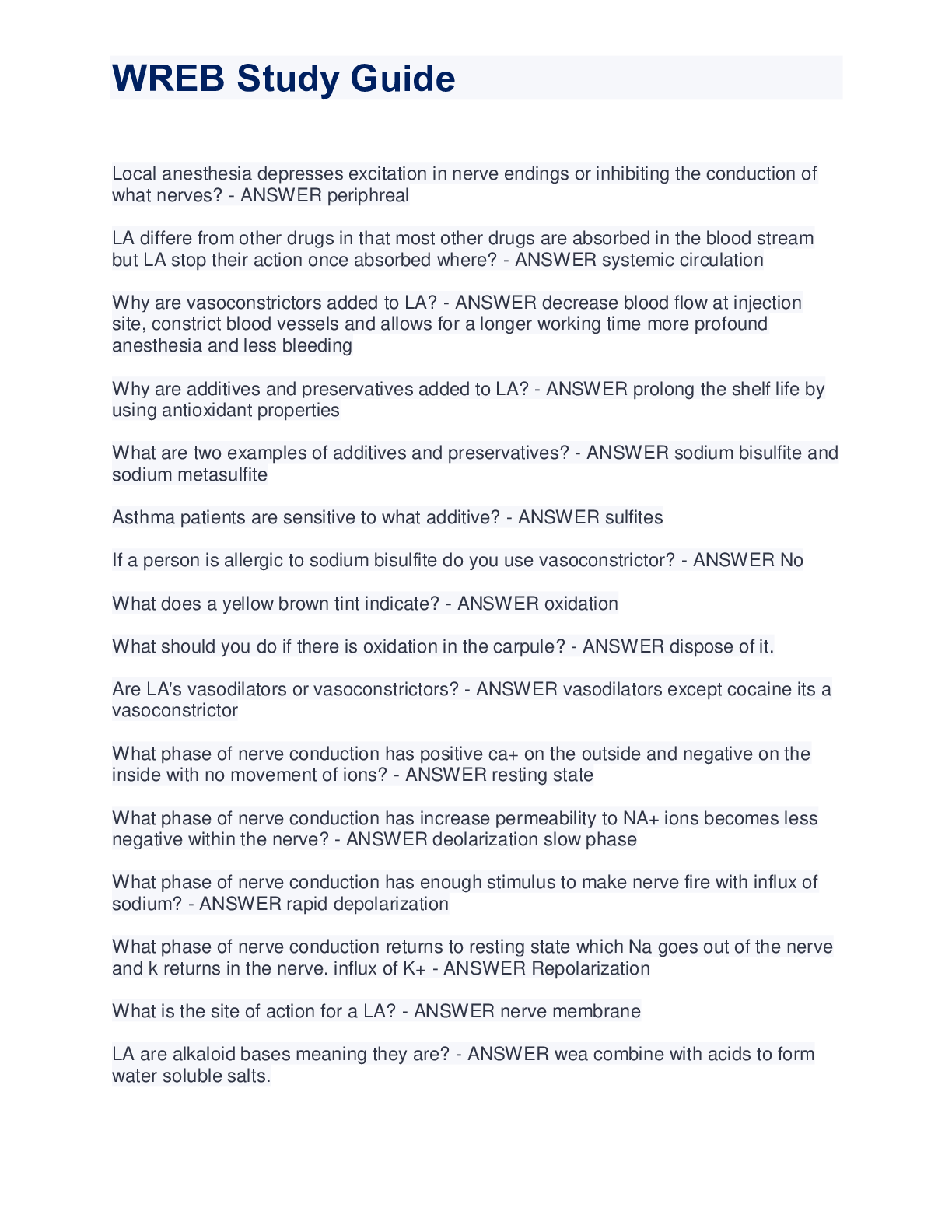
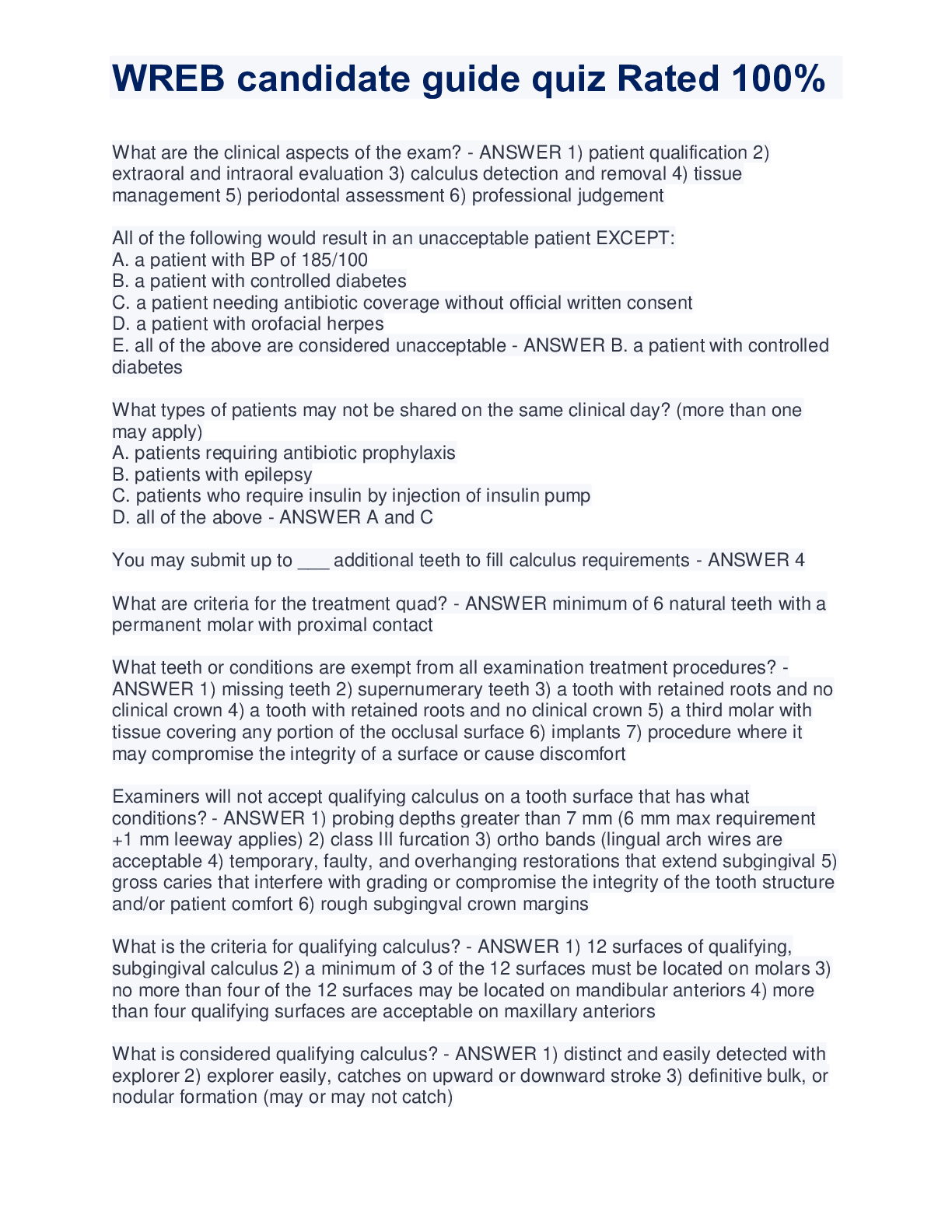

.png)
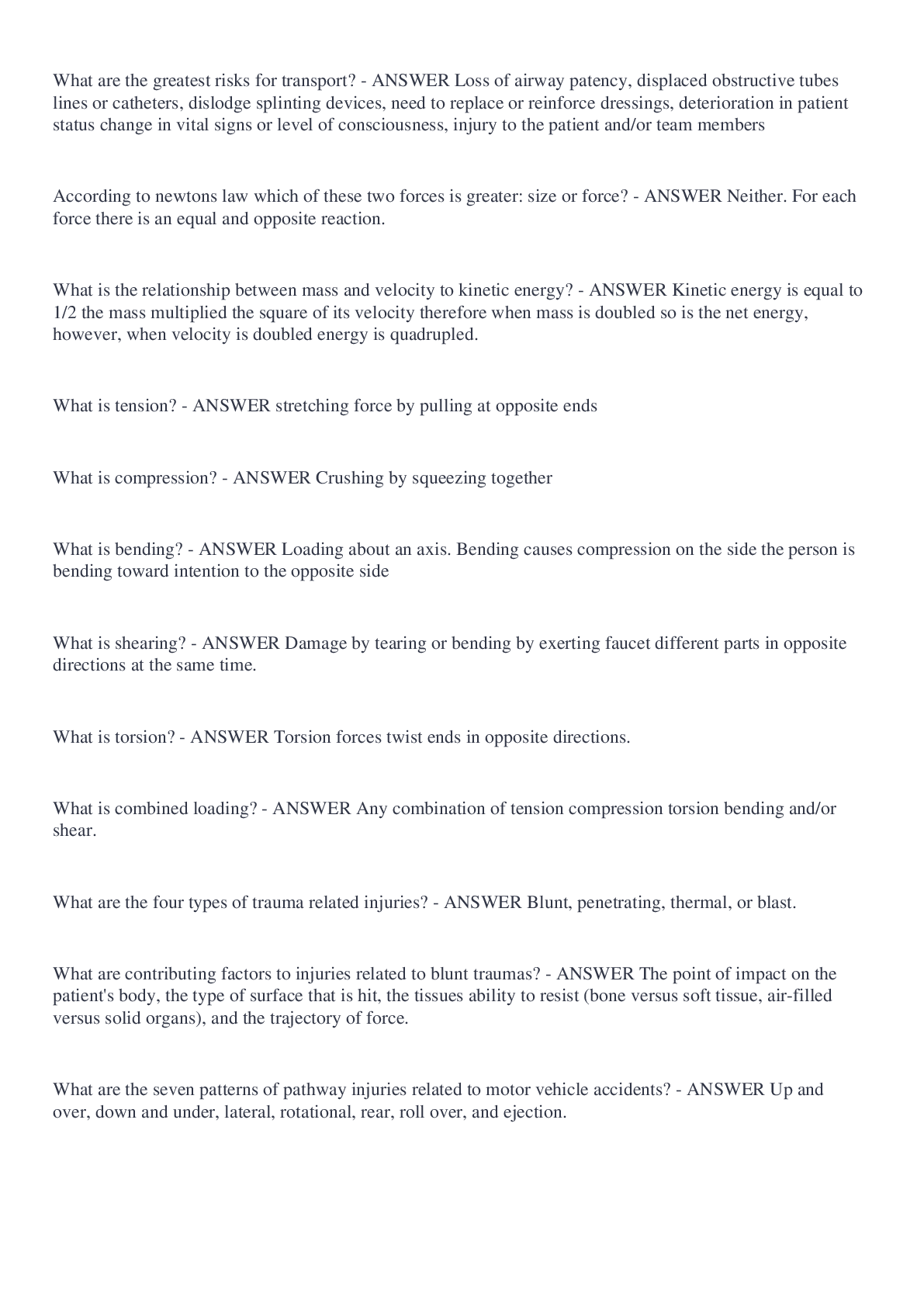



.png)

